Walk down memory lane with us as we remember our firsts over the past 20 years — and look forward to the future!
In the beginning…
Then-Chief Judge Judith S. Kaye’s Germ of an Idea
As early as 1983, after Judith S. Kaye joined the Court of Appeals as the first woman Associate Judge, she began to wonder who came before her, occupying the same chambers and using the same desk.
Later after she became the first woman Chief Judge in 1993 and after Albert M. Rosenblatt joined the Court in 1999, she found a partner whose curiosity about the history of the Court matched her own. As they investigated the judges that came before them, the interest in the legal history of the state grew…
March 1, 2000
Judges Kaye and Rosenblatt hatch a plan: The Breakfast Meeting.
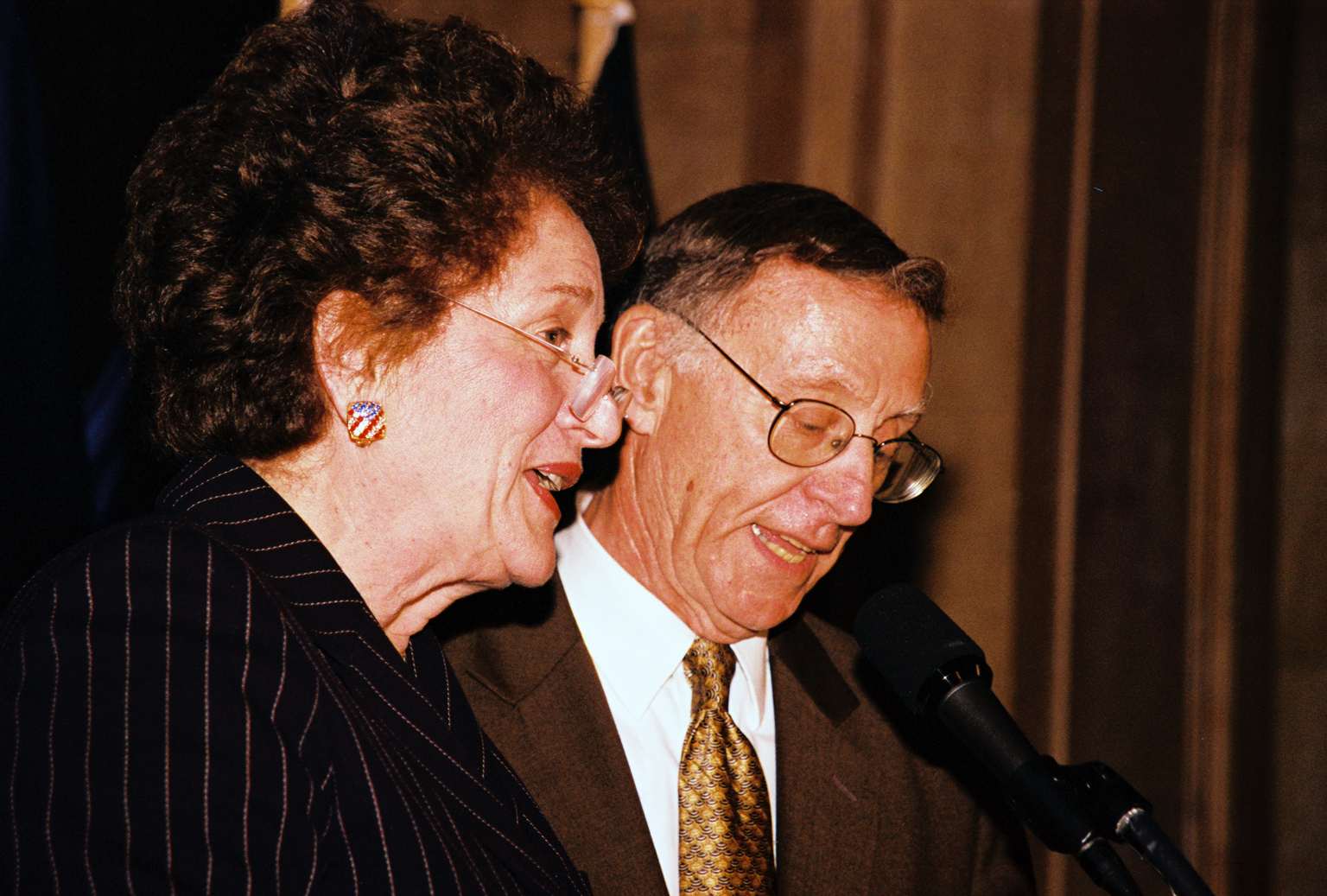
Then-Chief Judge Judith S. Kaye and Associate Judge Albert M. Rosenblatt, during one of their many breakfast discussions, decided to start developing a plan for a historical society dedicated to New York’s courts. This breakfast meeting became the launching point for the Society’s founding.
1997-2002
Implementing the Judges’ Ideas: Pre-Formation of the Society
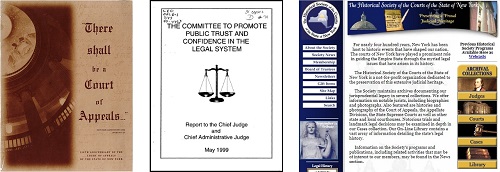
January 1, 1991: Duely & Constantly Kept is published jointly by the New York Court of Appeals and New York State Archives to commemorate the 300th anniversary of the Supreme Court of the State of New York.
September 8, 1997: There Shall Be a Court of Appeals… is published, commemorating the 150th anniversary of the Court. This was the first project that revisited the history of the judges, the cases, and the court building itself.
June, 1999: Chief Judge Judith S. Kaye receives an invitation from the Legal History Affinity Community of the American Association of State and Local History to send a representative from NYS. She sent Chief Reference Attorney Frances Murray, who learned that many other states were forming 501(c)3 legal history organizations and were providing foundational documents for others interested in starting historical societies.
July, 1999: The New York Committee to Promote Public Trust and Confidence in the Legal System issues a report making recommendations about public outreach and education. Chief Judge Kaye then assigned Ms. Murray to discuss the idea of a court-related historical society with the Committee, a project that was welcomed.
September, 1999: Ms. Murray works with the New York State Education Department Office of Counsel to craft a petition to the Regents for a provisional charter pursuant to Education Law (section 216-a) and 8 NYCRR 3.27.
September, 2000: At Judge Kaye’s request, Ms. Murray attends New York’s first State and Federal Court Historical Societies meeting, which was already well established in its fourth year. Representatives from a variety of court historical societies, including Michigan, Hawai’i, Louisiana, and federal courts, were present. This meeting then merged into the American Association for State and Local History conference the following year, which Ms. Murray also attended.
February, 2002: Law Reporting Bureau staff create a website of court-history. Documents were converted into searchable web-based files to make information more accessible to the online user. This website soon became the digital face of the Society.
February 1, 2001
Planners start to organize in Chief Judge Kaye’s chambers.
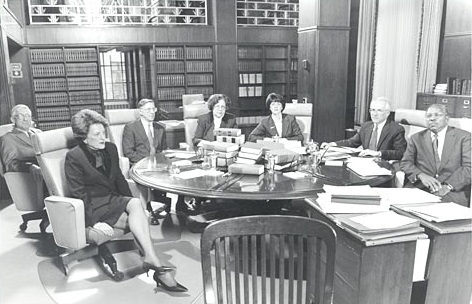
A group of planners met in Chief Judge Kaye’s chambers to discuss the plan for creating a historical society. This meeting laid the groundwork for outreach to other likeminded individuals, research of similar organizations, creation of a provisional charter, and developing a website.
April 23, 2002
The Historical Society of the Courts of the State of New York is granted a provisional charter.
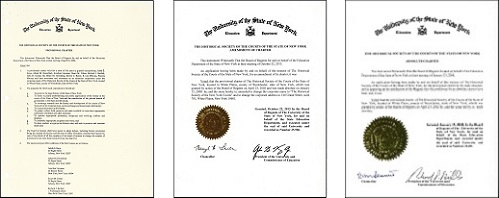
The Board of Regents of The University of the State of New York, for and on behalf of the State Education Department, granted a provisional charter to the Society. This charter was valid for five years, with the opportunity to apply for an absolute charter before the end of that period.
The provisional charter named Judith S. Kaye, Albert M. Rosenblatt, Jonathan Lippman, Stuart M. Cohen, Richard J. Bartlett, John D. Gordan III, Henry M. Greenberg, Steven C. Krane, E. Leo Milonas, and Frances Murray as Charter Trustees.
January 15, 2008: The Board of Regents accepted the Society’s application for its provisional charter to be made absolute.
October 22, 2013: The Board of Regents granted amendment of the Society’s charter to change its name from The Historical Society of the Courts of the State of New York to The Historical Society of the New York Courts, as well as change its corporate address.
May 28, 2002
The Society hosts the inaugural meeting of its Board of Trustees.
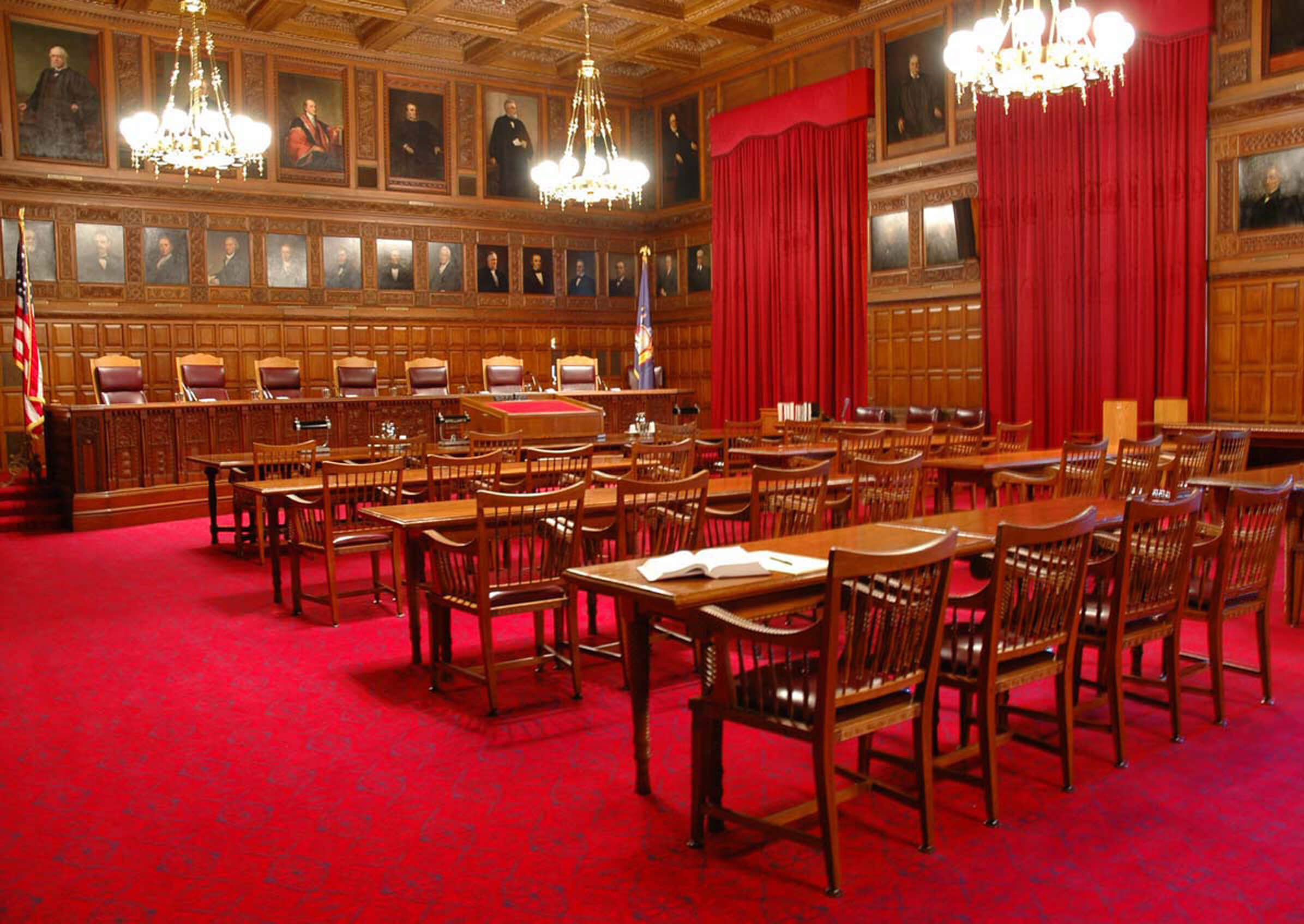
The first meeting of the Society’s Board of Trustees was held in Albany at the New York State Bar Association. Charter Trustees Judith S. Kaye, Albert M. Rosenblatt, Jonathan Lippman, Stuart M. Cohen, Richard J. Bartlett, John D. Gordan III, Henry M. Greenberg, Steven C. Krane, and Frances Murray were present, while E. Leo Milonas was absent.
At this meeting, Judge Rosenblatt was elected Founding President, serving from 2002 to 2019, and he continues to serve as President Emeritus. The Society’s president is its chief executive officer, exercising general supervision over its affairs and operations. Another Charter Trustee, Judge Lippman, now serves as President.
November 2005: The Society hired its first executive director Marilyn Marcus, who continues to serve in this role today.
September, 2002
Spreading the word about the Society
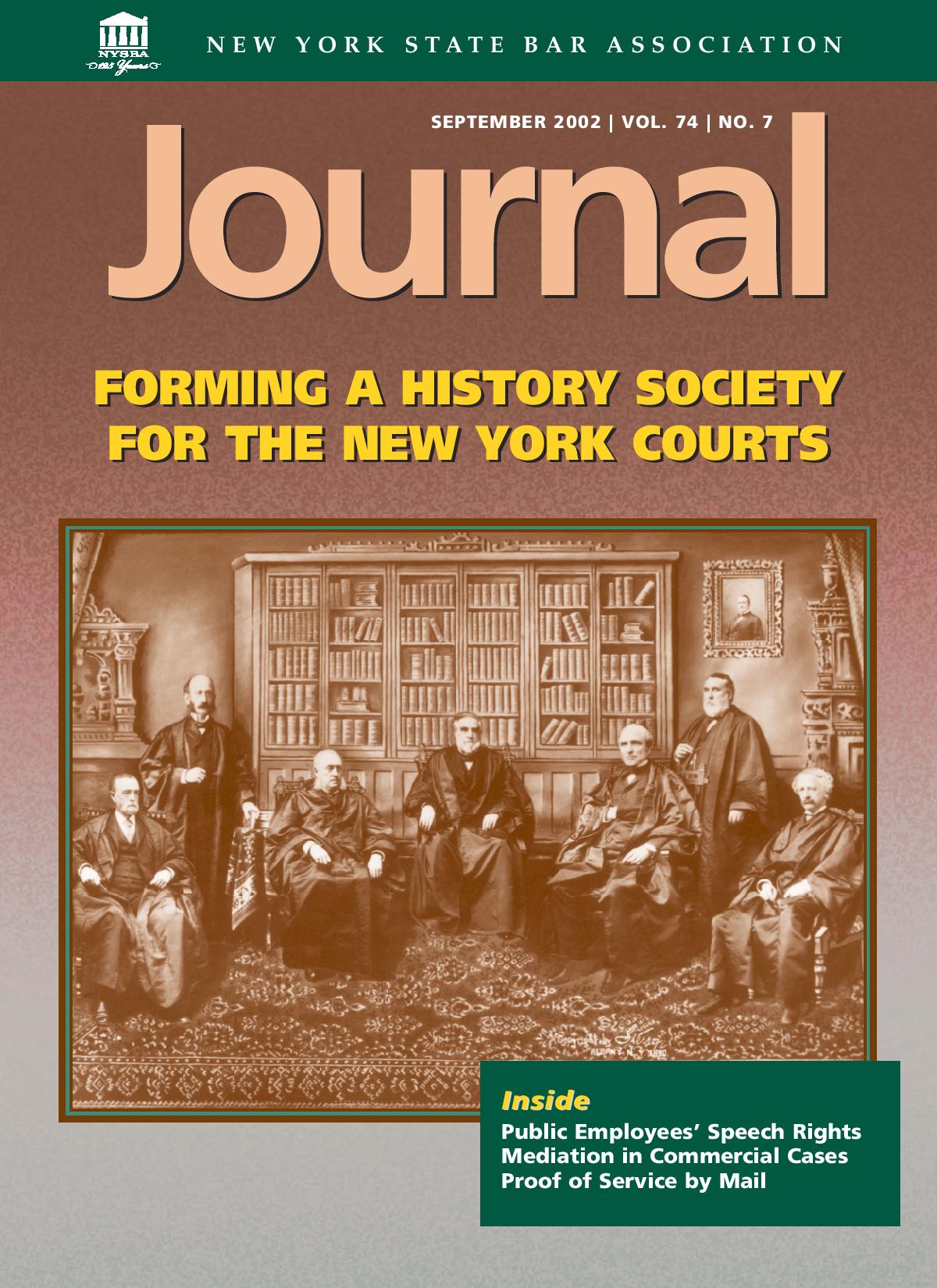
New York State Bar Association Journal and The New York Law Journal both published articles with quotes from Chief Judge Judith S. Kaye and Judge Albert M. Rosenblatt, discussing the creation of the Society, its important role in showcasing the roots of the court system, and using its website as a resource for New York legal history.
According to Judge Rosenblatt, “Perhaps if we can help [future generations] understand us and our forebears, they can improve on what we all have done. We want to save what is about to be lost, assemble what we have, and make a tableau for the future.” After our first 20 years, we could not agree more.
January 1, 2003
The Society releases its first calendar, Courthouses of New York State.
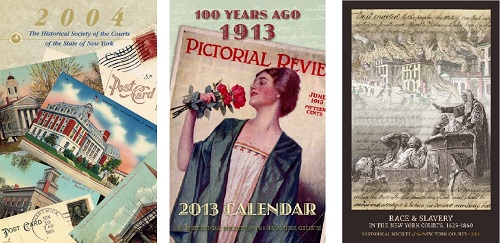
With a different theme for each year, our annual calendar has been offering bite-sized pieces of New York legal history in 19 editions.
April 22, 2003
The Society delivers its first public program: The Framing of the Constitution: New York’s Role.
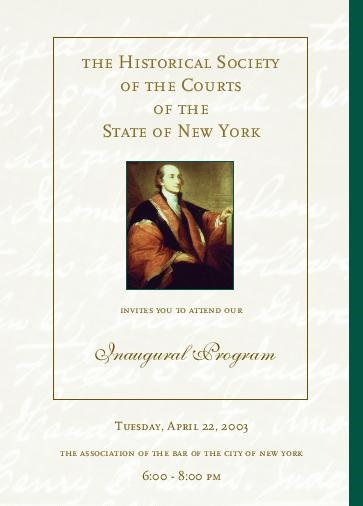
Since 2003, we have delivered 70 legal history public programs, reaching over 15,000 people live and virtually, and counting. Let’s see what the next 20 years brings!
August 11, 2003
The Society releases its first issue of Judicial Notice.

What started as a humble newsletter in 2003 swiftly became an impressive scholarly feat, and is even featured on WestLaw. With over 60 articles across 16 issues already published, we are only getting started!
July 1, 2005
New York Legal History, a scholarly pursuit, is published.
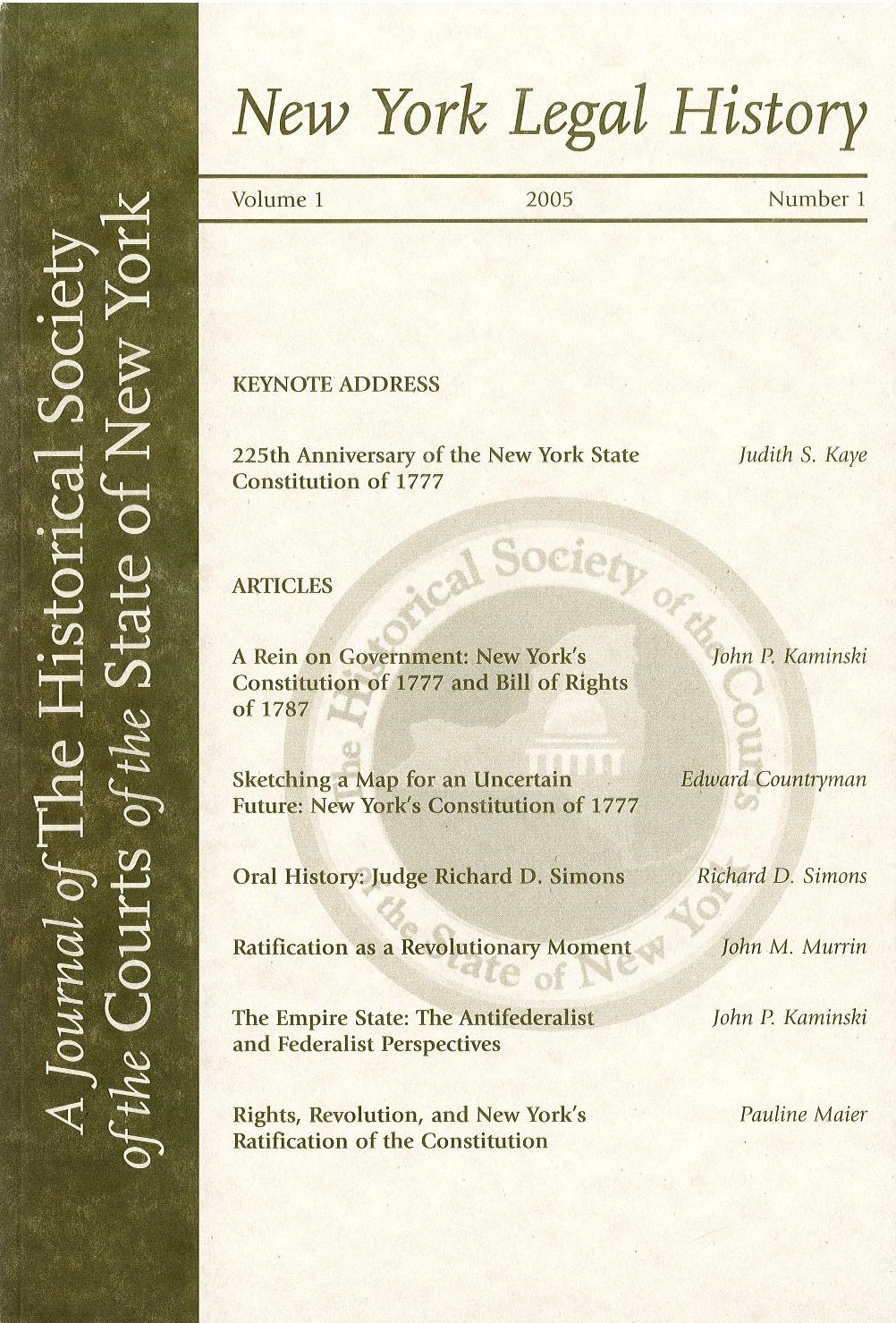
New York Legal History, in some ways the predecessor of Judicial Notice, which was still a newsletter at the time, was published in partnership with Albany Law School. Featuring five scholarly articles written by legal history experts, this publication marked a turning point for the Society’s scholarly pursuits.
November 17, 2006
The descendants of Court of Appeals judges are hosted at the Court in a celebration.

The judges of the Court of Appeals hosted a party full of their predecessors’ descendants. These descendants were found during the process of writing biographies of all Court of Appeals judges, which were published in 2007 in The Judges of the New York Court of Appeals: A Biographical History, edited by Albert M. Rosenblatt with foreword by Judith S. Kaye. This gathering marked a celebration of their ancestors’ important role in New York’s legal system.
April 10, 2007
The Society hosts its first annual gala dinner, Honoring the Retired Judges of the New York Court of Appeals.
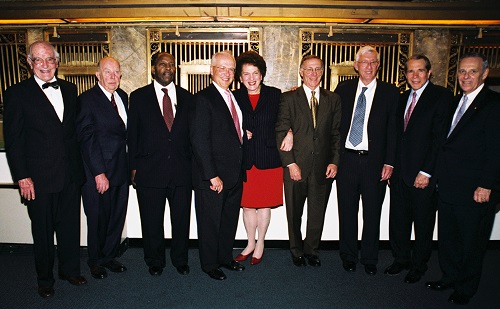
For 13 years, our annual gala has celebrated the New York Unified Court System, its judges, its courts, and its legacy. We can’t wait to come together again for the 14th dinner!
April 23, 2007
The Society publishes Historic Courthouses of the State of New York: A Study in Postcards by Albert M. & Julia C. Rosenblatt.
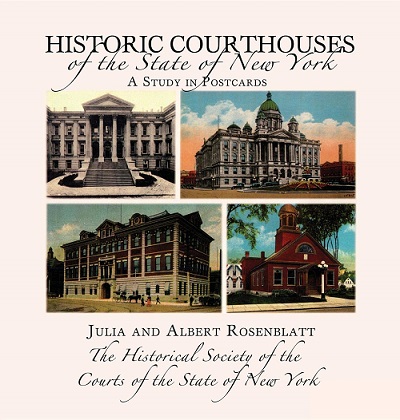
Our first book publication looks to the state’s many courthouses, telling a visual story through postcards and taking readers on a trip across the state.
September 18, 2007
The Society hosts the inaugural Stephen R. Kaye Program, Alexander Hamilton: The Anchoring of American Law.
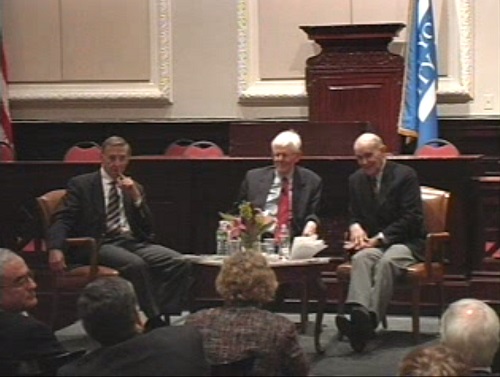
Developed with Stephen R. Kaye’s firm Proskauer Rose, this program series dives into the late attorney’s favorite aspects of legal history. This series, with seven events so far, covers courthouses, the colonial era, historic cases, and more.
October 15, 2007
The Society publishes The Judges of the New York Court of Appeals: A Biographical History, edited by Albert M. Rosenblatt with foreword by Judith S. Kaye.
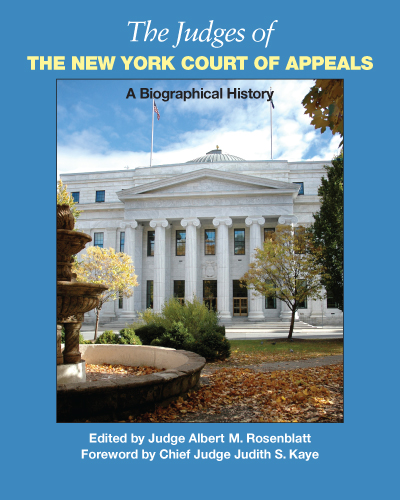
Our second book publication provided biographies for every judge — over 100 of them– who sat on the Court of Appeals, recounting their early lives, careers, and cases. All of these biographies are freely available on our website.
May 1, 2008
Elijah Fagan-Solis, the first winner of the Garfinkel Essay Scholarship, is celebrated at Court of Appeals Law Day.
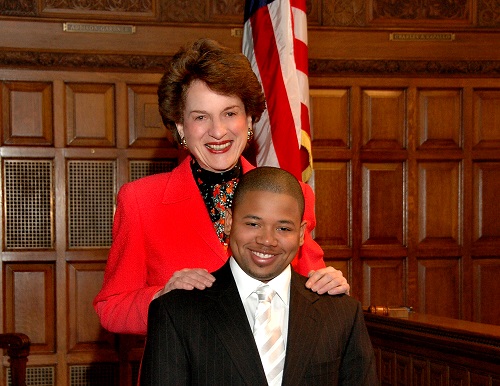
Hudson Valley Community College student Elijah Fagan-Solis was the first winner of the David A. Garfinkel Essay Scholarship. He wrote on the theme of Human Rights in New York: The Legacy of the Lemmon Slave Case. Over the years, approximately 700 students from more than 30 community colleges across the state have written on the topics of voting, jury service, the Triangle Shirtwaist Factory fire, and more.
October 27, 2008
The Society hosts its inaugural program in partnership with the U.S. Supreme Court Historical Society Ladies of Legend: The First Generation of American Women Attorneys.

We partnered with the U.S. Supreme Court Historical Society in the series Nominated from New York: The Empire State’s Contributions to the Supreme Court Bench to bring Supreme Court Justices to New York to share our mutual legal heritage. Through our partnership of five programs (with more to come!), in 2015, we became the only organization to bring Chief Justice John G. Roberts, Jr. to a live special event.
May 15, 2009
The Society starts its oral history project with an interview of Hon. William C. Thompson.
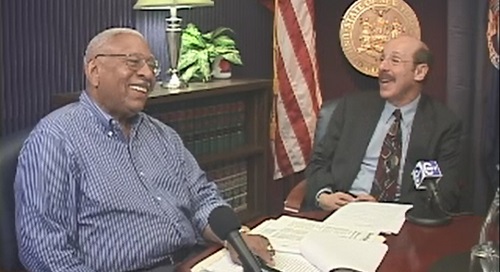
Since this first interview, our oral history archive has grown to feature over 20 interviews, including many retired Court of Appeals judges and the four most recent past Chief Judges.
September 13, 2010
The Society begins its partnership with Bard High School Early College to produce curriculum on the role of the courts, which continues to this day.
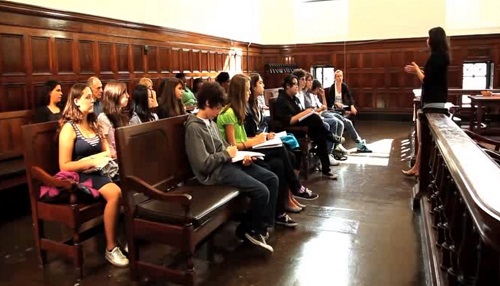
This Writing & Thinking Workshop on Justice, provided to students at Bard High School Early College, was our first partnership program with the school. Since then, we’ve reached over 3,000 students and teachers with curriculum on themes related to the founding documents, an independent judiciary, and the role of the courts in society, as well as our Judith S. Kaye Teaching Fellowship, which brings legal scholars into the classroom to teach these concepts.
June 1, 2011
Legal History by Era launches on the Society’s website.

Frances Murray began the undertaking of an ambitious project — looking back at each era of New York’s legal history, its judges and lawyers, its cases and courts, and the foundational documents of the state and nation. This continues to be a work in progress as we move into the 20th century.
January 14, 2013
The Society’s digital image gets a refresh with a new website.
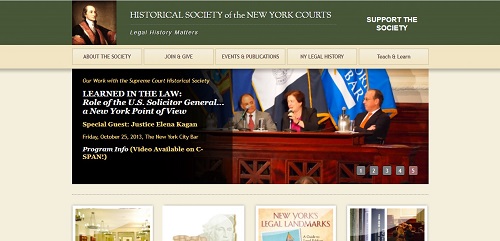
The second iteration of our website highlights more of the work that we do, including our public programs and education materials. Our current website streamlines this even more to provide all of our work in a mobile-friendly format.
June 20, 2013
The Society publishes Opening Statements edited by Albert M. Rosenblatt & Julia C. Rosenblatt.
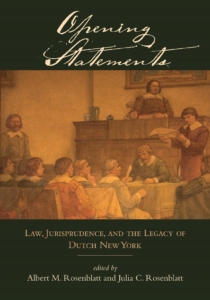
Our third publication features essays written about the Dutch era in New York and its last legal legacy, and is edited by Albert M. Rosenblatt and Julia C. Rosenblatt. This era continues to have an impact on jurisprudence today.
June 24, 2014
The County Legal History Projects Launches to Explore NYS’s Local History
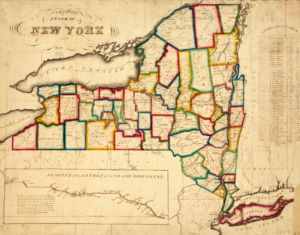
The Society’s County Legal History began with the goal of going back to the roots of the judicial system in the state: the local county courts. Covering judges, attorneys, cases, records, and the general legal history of the counties, these histories illustrate how important local communities are to the jurisprudence of the State. Since the project launched, we have completed 15 histories — about a quarter of the 62 counties!
January 12, 2015
The Society expands its reach on social media.
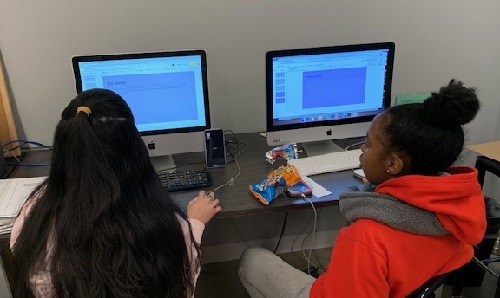
We’re now on Facebook, Twitter, Instagram, LinkedIn, and YouTube! Connect with us for updates about our projects and programs as well as tidbits of New York legal history.
July 12, 2015
The Society partners with Bard College Institute for Writing and Thinking to deliver its first workshop to teachers.
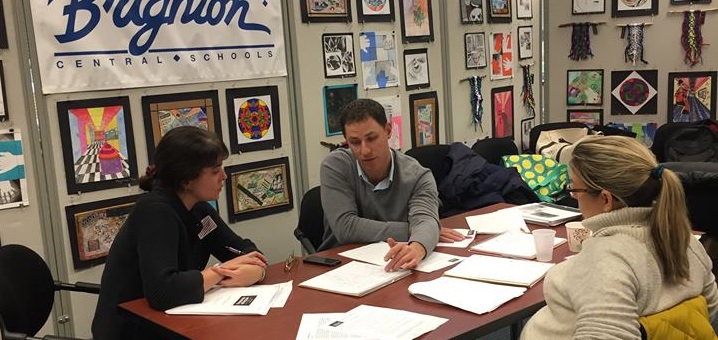
The Society partnered with Bard College Institute for Writing & Thinking to give teachers the tools to bring legal history into their classrooms, offering eight workshops to over 100 teachers.
October 5, 2015
The Society’s Young Lawyers Committee is established to give voice to attorneys who are starting their careers.

The Society’s Young Lawyers Committee was established to give newer attorneys a platform to explore elements of legal history that are of interest to them. Through events, happy hours, and law school chapters, the Committee bridges New York’s legal heritage with a modern-day spin.
February 2, 2016
Dr. Julia Rose Kraut becomes the Society’s inaugural Judith S. Kaye Teaching Fellow.
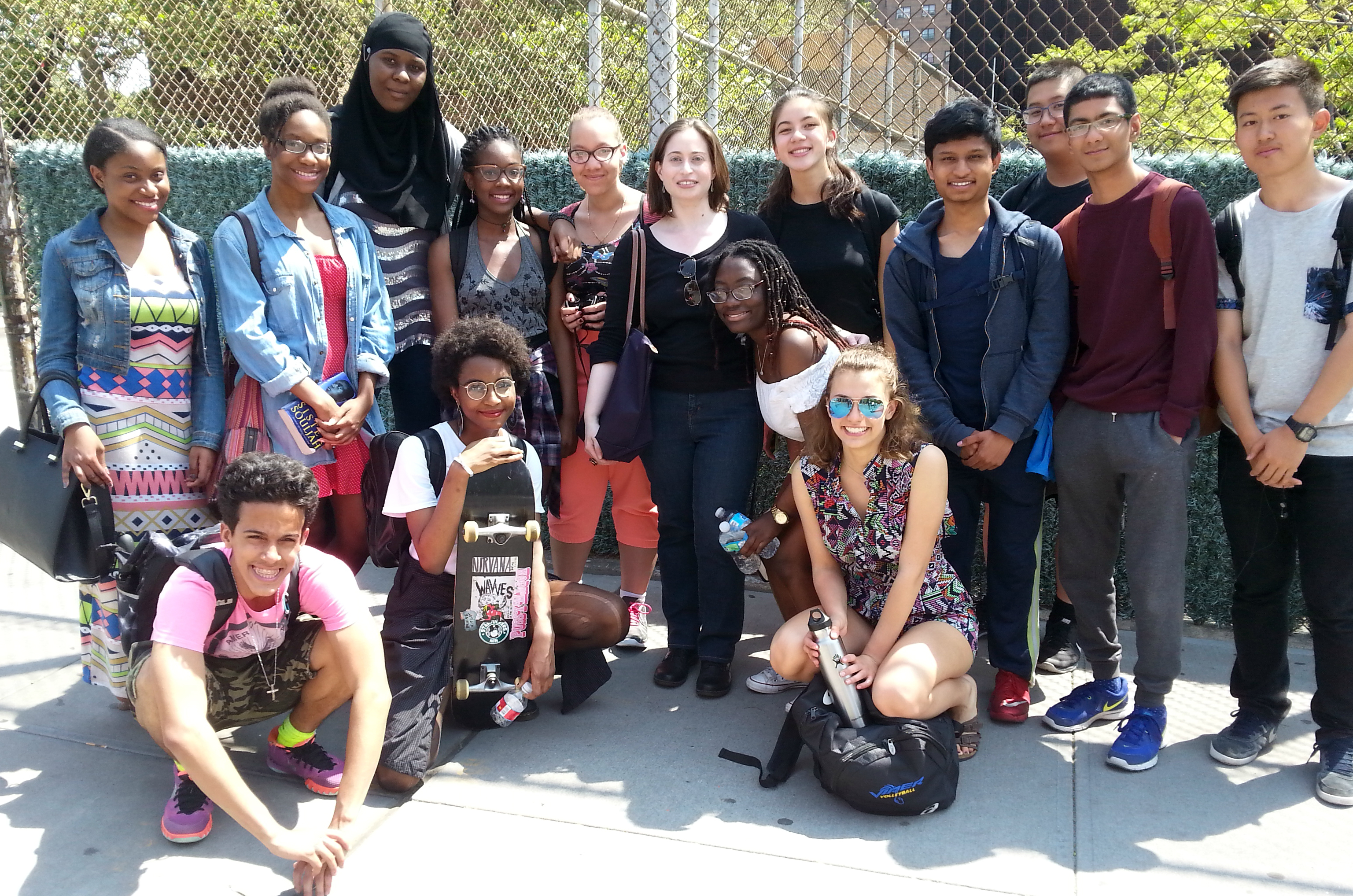
Our Judith S. Kaye Teaching Fellowship began with Dr. Julia Rose Kraut and the teaching of her original course Civil Rights, Civil Liberties, and the Empire State. Since Dr. Kraut’s time, we have brought five fellows to Bard High School Early College to teach topics including immigration, privacy, labor, and more to nearly 300 students.
July 28, 2016
The Society hosts its first Young Lawyers Committee event, Bad Apples in the Big Apple: Notorious Criminal Trials in New York.

Targeting attorneys who are just beginning their careers, the Young Lawyers Committee has reached over 600 people through its five programs, with more events in the works for 2022.
December 12, 2016
The Society hosts its inaugural Judith S. Kaye Program: Conversations on Women and the Law, Chief Judge Judith S. Kaye: A Clerk’s Eye View.
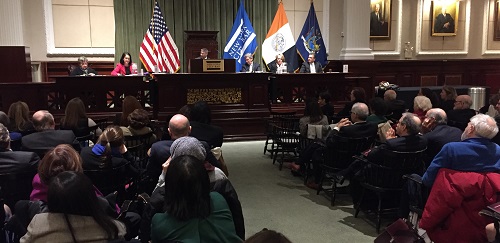
The Judith S. Kaye Program Series: Conversations on Women and the Law is sponsored by Judge Kaye’s firm Skadden, Arps, Slate, Meagher & Flom LLP. With three events so far, this series focuses on the history, and future, of women in the legal profession.
November 26, 2018
The Society launches its podcast to bring little known stories of New York legal history to the public.
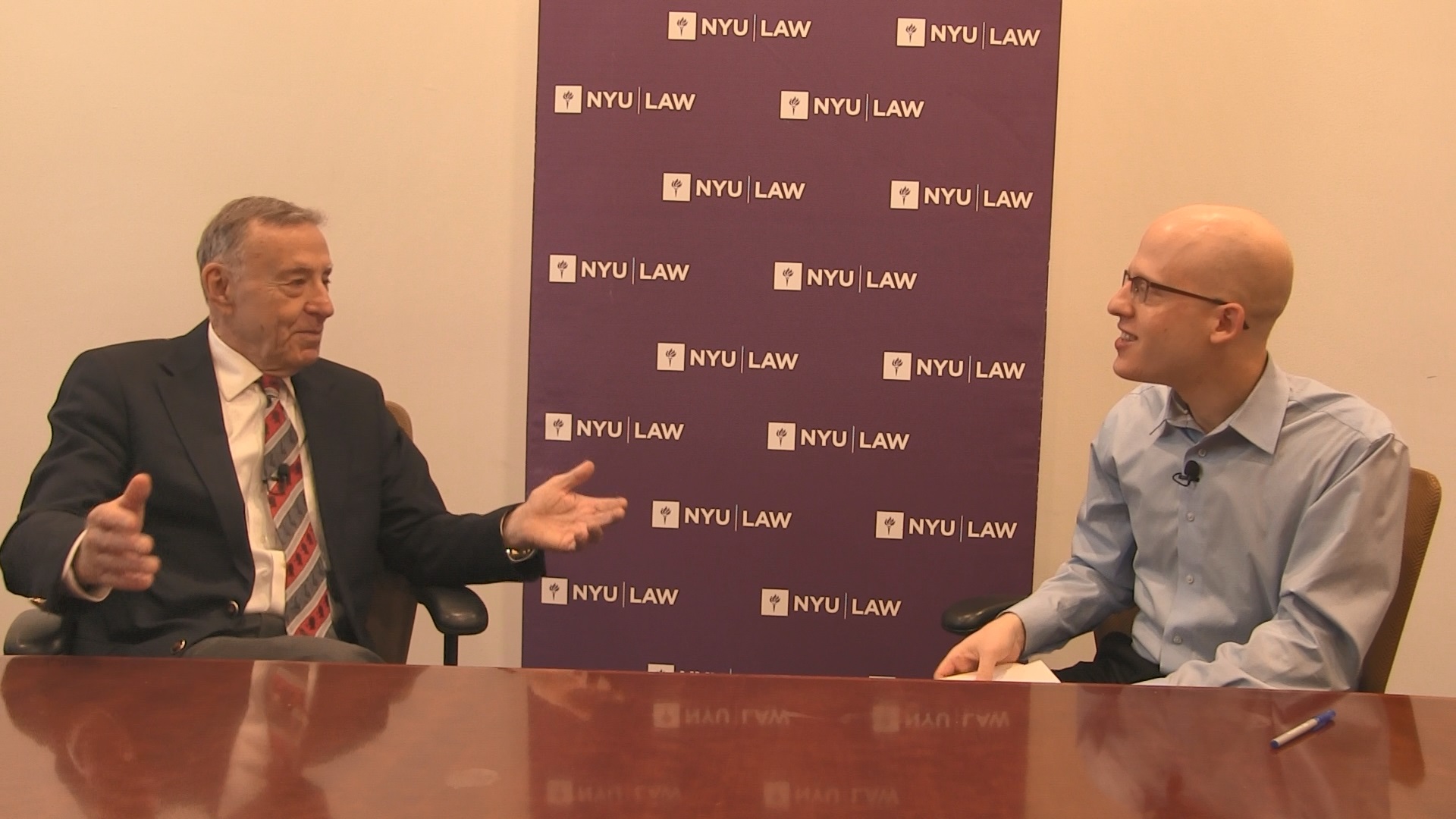
Our first episode Missing Court Records Means Missing History featured Hon. Albert M. Rosenblatt and David L. Goodwin. Since 2018, we’ve released 16 podcasts to the tune of 1,200 downloads — with many more in the works!
June 1, 2019
The Society publishes Judith S. Kaye In Her Own Words: Reflections on Life and the Law, with Selected Judicial Opinions and Articles.
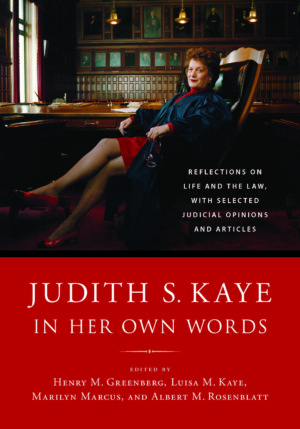
Edited by Henry M. Greenberg, Luisa M. Kaye, Marilyn Marcus, and Albert M. Rosenblatt, Judith S. Kaye In Her Own Words features the life story of Judge Kaye as she wrote it before her death in 2016.
August 13, 2019
The Society enters the 21st century with its new mobile-friendly website.

Our current website launched three short years ago to streamline our events, educational materials, oral history interviews, podcasts, legal history archive, and more! Providing over 600 biographies, 50 public program videos, 20 oral histories, 20 lesson plans for teachers and students, and all past issues of Judicial Notice and our calendar to over 110,000 people annually, our website is a treasure trove of New York legal history.
November 16, 2019
The Society launches a Saturday program for students in Harlem.
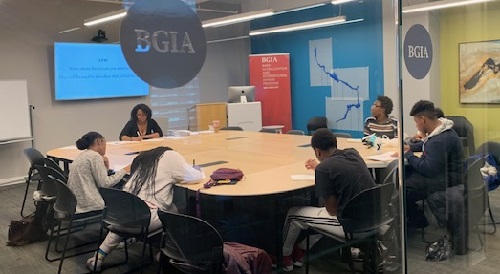
The Harlem Law Program is a pilot afterschool program specifically for students in Harlem who are interested in learning more about the law. The pilot initially reached about 12 students, but had to be put on hold due to the challenges the pandemic brought to the education sector as a whole. We hope to reinvigorate the program soon.
March 11, 2020
The Society dives into the digital world during the COVID-19 pandemic.
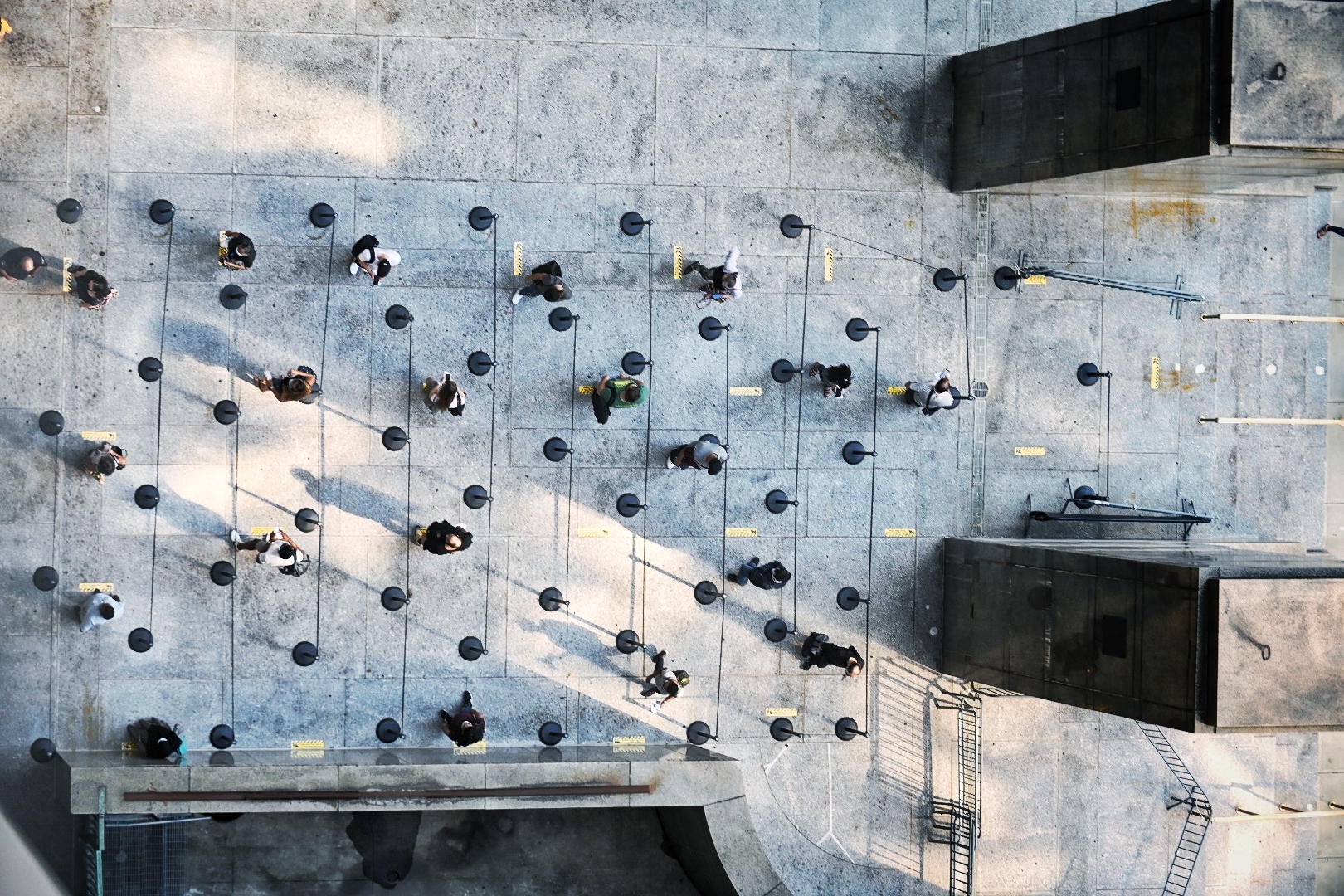
The COVID-19 pandemic necessitated radical rethinking of work for many nonprofits, and challenged us to create new digital projects, including six webinars, three hybrid or virtual classes, and two new pandemic-specific interview series.
June 20, 2020
The Society launches an interview series in which lawyers discuss the challenges COVID-19 brought to how they support their clients.
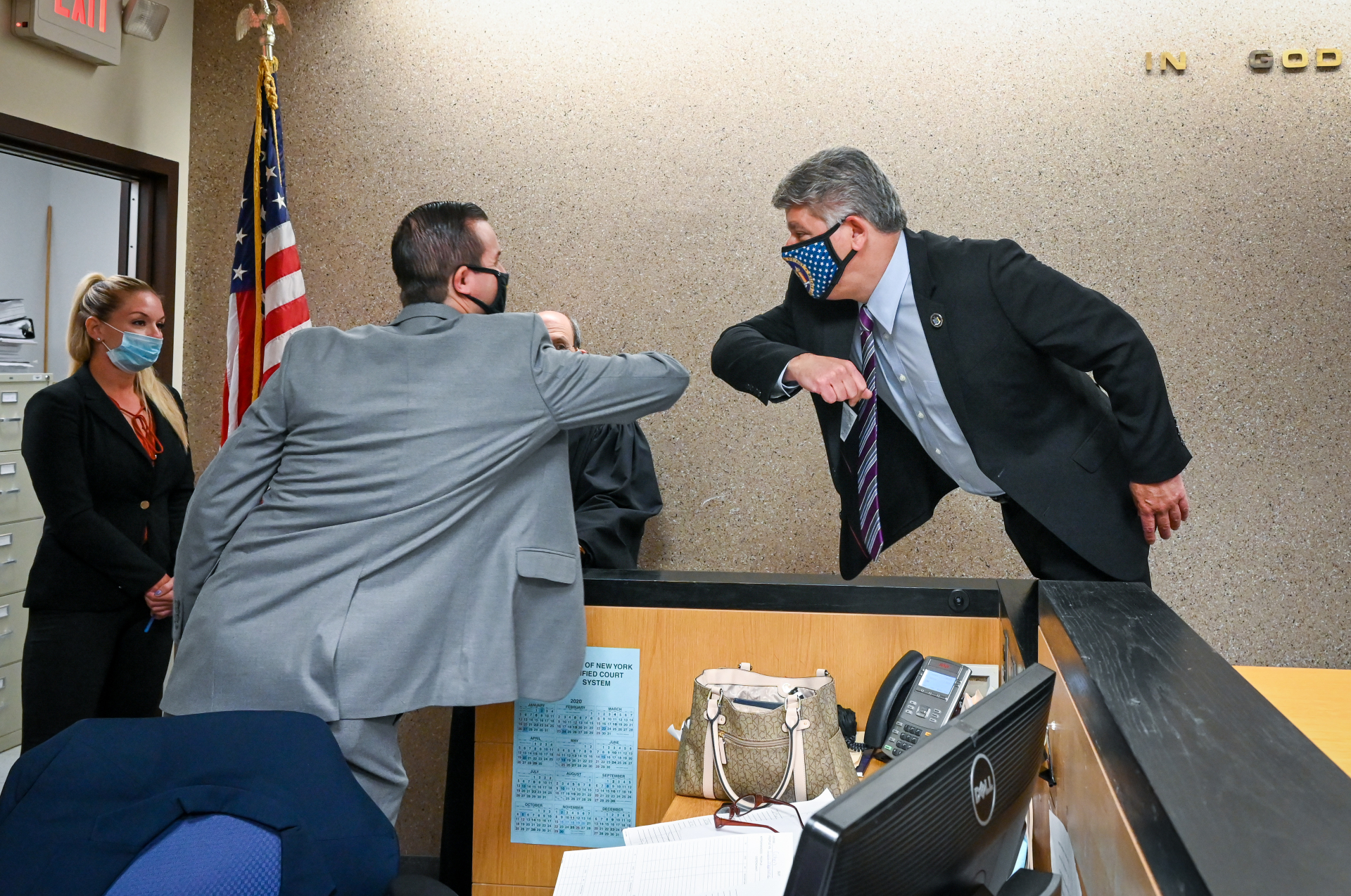
This project features nearly 30 interviews with practioners across the State and memorializes the experiences of these attorneys as they adapt to remote practice.
September 15, 2021
The Society memorializes the experiences of judges and court staff as the pandemic necessitates the transition to virtual.
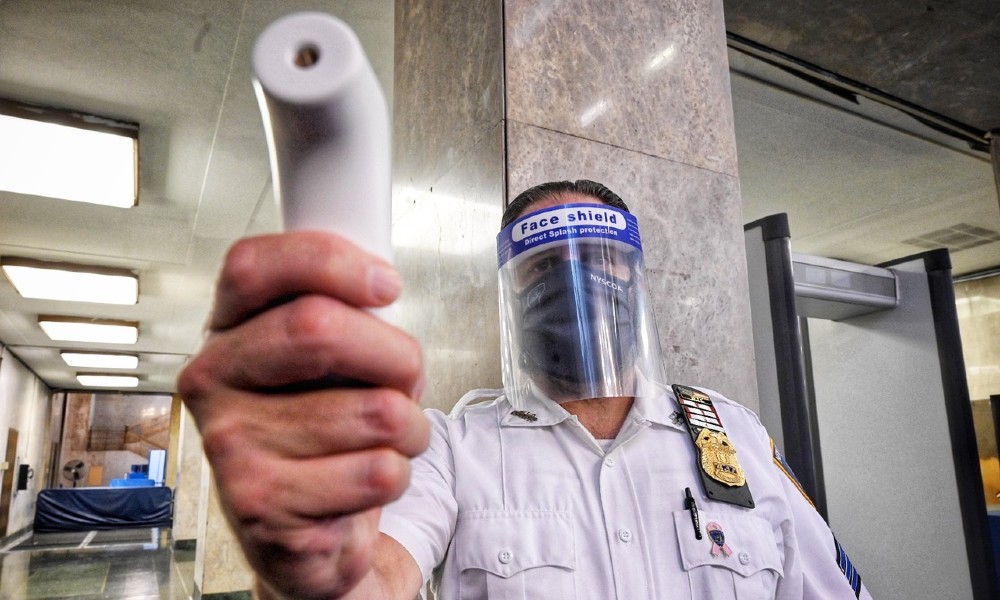
This project records how nearly 40 judges and court staff people, including Chief Judge Janet DiFiore, Chief Administrative Judge Lawrence K. Marks, the four Presiding Justices of the Appellate Division, pivoted to meet the needs of litigants appearing before them during the unprecedented times of the COVID-19 pandemic. This project also includes a timeline that highlights the major moments of the court system over the course of the pandemic.
November 1, 2021
The Society launches its first travelling exhibit on a lesser-known case where the New York courts went against the U.S. Supreme Court.
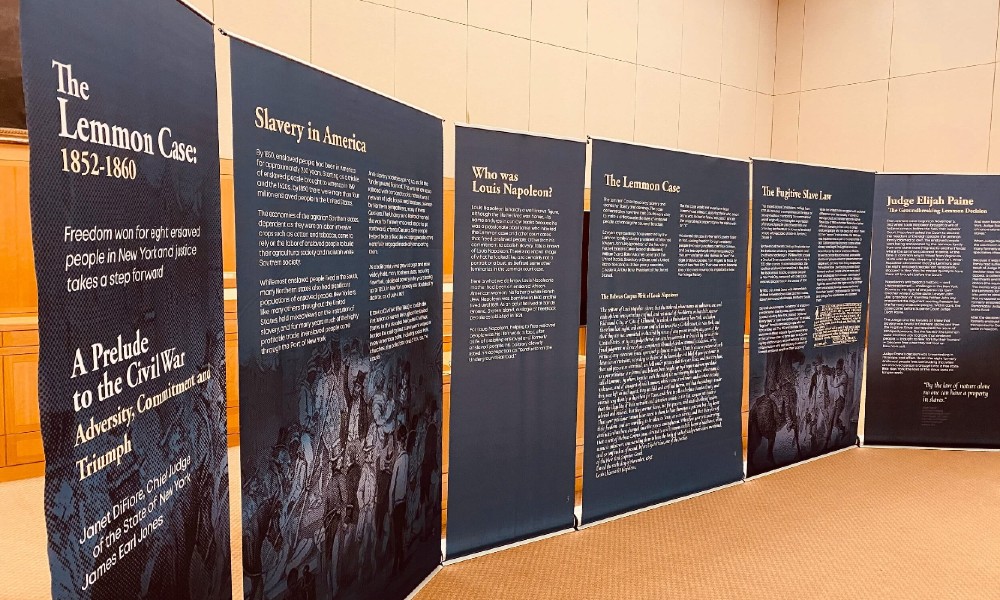
This travelling exhibit is currently on tour to 45 courthouses across 90 weeks, telling the story of the Lemmon Slave Case, where the New York courts ruled eight enslaved people free, going against the 1857 Dred Scott decision. The exhibit features eight written panels as well as a brief narration by James Earl Jones.
